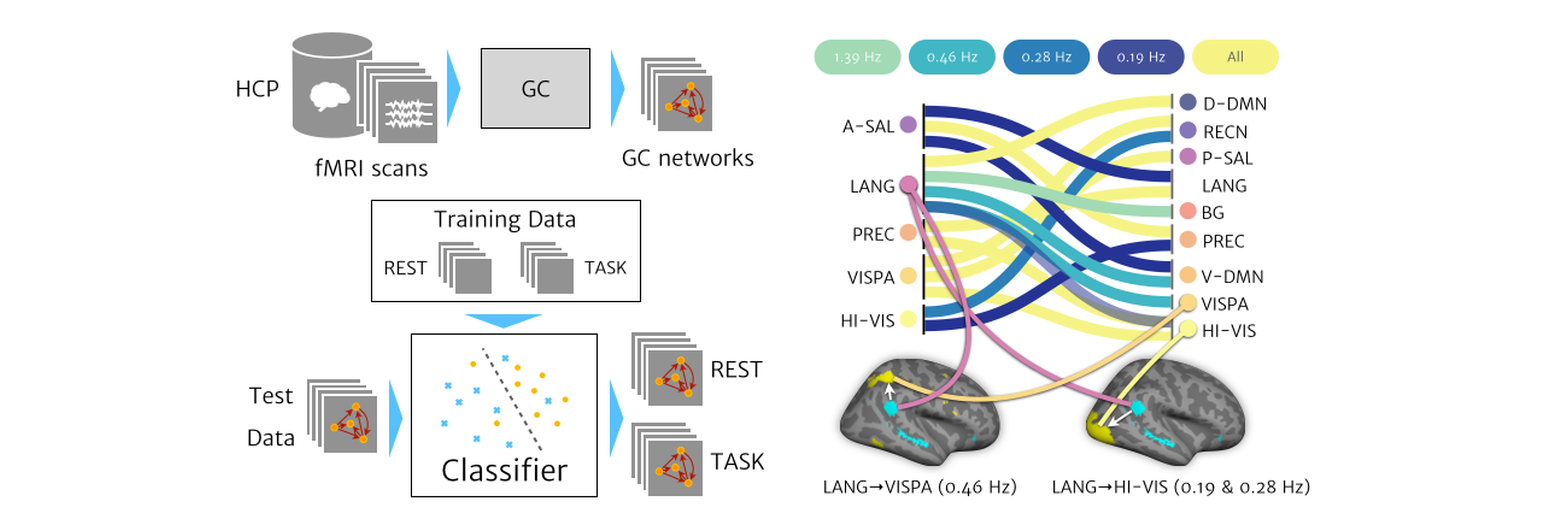Information flow in brain networks
To successfully engage with the world around us our brain must have the ability to operate at various timescales: ranging from fractions of a second for reacting to sudden events, to hours and days for learning complex tasks. Yet, we know very little about how brain areas flexibly coordinate their activity across these diverse timescales. We apply an established method called Granger causality, developed in 1969 by Clive Granger, a Nobel-prize winning economist. While originally developed for forecasting econometric timeseries, we apply Granger causality to timeseries obtained from functional magnetic resonance imaging (fMRI) scans of brain activity. These brain scans were acquired when observers were performing tasks of various kinds (e.g. reading stories, playing games or resting) inside the fMRI scanner. We show that Granger causality reliably estimates patterns of interactions among brain regions, so much so that these patterns can be used to accurately predict which task the subjects were engaged in inside the fMRI scanner. Moreover, Granger causality provides valuable information about different timescales at which these interactions occur, and provides an important tool for understanding how brain regions coordinate their activity to enable flexible cognitive behaviors.

Machine learning applied to directed functional connectivity estimated with fMRI to predict human participants’ cognitive state.
Reference:
Sundaresan, Nabeel, Sridharan. Mapping distinct timescales of functional interactions among brain networks. Advances in Neural Information Processing Systems (NIPS), 2017, Long Beach, California. https://nips.cc/Conferences/2017/Schedule?showEvent=9191
website URL : http://cns.iisc.ac.in/sridhar
Other Featured research




